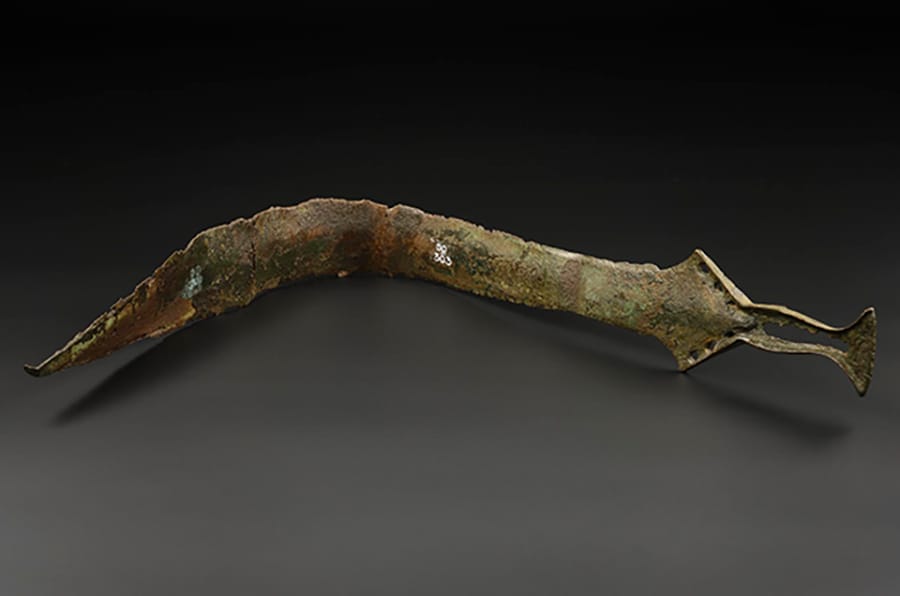Cruel, Wicked, and Bad-Hearted

by Tom Scocca
Suppose great giants, ten feet tall and fearsomely be-weaponed, have marched on the gates of the city. Knights and men-at-arms come forth to do battle, rank upon rank, unfaltering though tree-thick spears pierce them, immense axes slash through them. Brave warriors fall and more step forward, risking their own destruction to press the fight to the looming foes. Bold and fearless heroes! Long will the city sing of your sacrifice against the dread giants.
Now consider the goblin horde. The little monsters swarm from their lair like rats or insects, fighting savagely against the heroes unlucky enough to run afoul of them. Their numbers are as inexhaustible as their malice. They don't fight fair.
Who will take the goblins' side? Goblinhood has been more and more on my mind ever since I pulled the old Dungeons & Dragons rulebooks out of the attic of the house I grew up in, to introduce my kids to the game. Goblins are a survivable starter foe for low-level characters, as long as you ignore the Monster Manual's line for "NO. APPEARING: 40–400." If the numbers are roughly equal, a party of novice adventurers ought to be able to engage the goblins, slay them, loot their corpses (3–18 silver pieces each on the treasure table), and move on.
Disposability is the goblin's lot. J.R.R. Tolkien's Great Goblin lasts all of three pages of The Hobbit from his first blustering appearance to his unceremonious demise, cut in half by a single stroke of Gandalf's sword. His followers scatter but they soon regroup; though goblins may be killable, they're persistent.
The goblins have brio and they have goals of their own. They ride intelligent wolves, their comrades in war and raiding. Tolkien specifies that the wolves are "evil wolves over the Edge of the Wild," just as he specifies in introducing the goblins that they are "cruel, wicked, and bad-hearted." It's important to say who the bad guys are because, as he concedes, the animosity between the villain goblins and his hero dwarves is basically a fight over underground real estate. If the deck weren't stacked against them, the goblins might have a valid point.
The Hobbit drew the pattern for fantasy goblins of this kind: antic, violent, organized. Tolkien claimed, as he hammered his children's adventure book into the continuity of the fantasy epic that followed it, that "goblin" was just another word for "orc," but the stories say otherwise. The orcs are grim cogs in the war machine, footsoldiers of Mordor. When Tolkien's orcs give a glimpse of anything other than meanness and bloodthirst, it's the weariness of beaten-down troops, not the animation of his goblins.
When Gary Gygax wrote the rules of D&D, cribbing shamelessly from Tolkieniana, he kept the orcs and the goblins separate. Orcs stand six feet tall or more, while goblins are only four feet—one rung up from the bottom of the ladder of enemy humanoids, bigger and stronger than the kobolds and smaller and weaker than anything else, from orcs up through hobgoblins, ogres, and hill giants. Yet the average goblin has more hit points, more life force, than an ordinary non-player human or halfling (Gygax's barely veiled term for "hobbit").
It's all foundationally racist, beyond dispute, this building of fantasy worlds around different kinds of persons or non-persons, with their inborn proclivities and fixed moral status. Tolkien made his goblins not only bad-hearted but gifted miners who lazily prefer to do "untidy and dirty" work; for weapons, they use axes and "bent swords." He meant the goblins to be a vessel into which he skimmed off the bad from the good in humanity: "It is not unlikely that they invented some of the machines that have since troubled the world, especially the ingenious devices for killing large numbers of people at once, for wheels and engines and explosions always delighted them," he wrote, though in fact on non-Middle ordinary Earth it was upright surface-dwelling humans who did those things.
Still, stereotypes and archetypes twist around on you, like so many bent swords. Whatever Orientalist colors Tolkien may have tried to paint the armies of evil with in The Lord of the Rings, anyone even passingly familiar with the Crusades knows that defenders on the clean high walls of Minas Tirith would be the Saracens, with the filthy brutish Christians teeming below. And looking at the old role-playing games, four or five decades into life, I've felt my interest and sympathy turning toward the supernumeraries.
What roles does one get to play, really? The original Advanced Dungeons & Dragons let players inhabit personae including dwarves (tough, good at tunnel-building), halflings (nimble and magic-resistant), and even elves, with their near-endless lifespans and tedious superiority. Goblins were the Other, though. The closest you could get was to be a half-orc. The current Fifth Edition of the Player's Handbook still won't offer the goblins' point of view, even as it provides the more grandiose participants the chance to play as human/dragon or human/demon hybrids.
Being part dragon makes about as much sense, narratively, as being part dungeon. Fantasy is dogged by the temptations of maximalism, the urge to skip to the part of the hero's journey where the protagonist is already special and interesting and the world tilts their way. Why not start off small and fierce and anonymous, and see how far you go?

